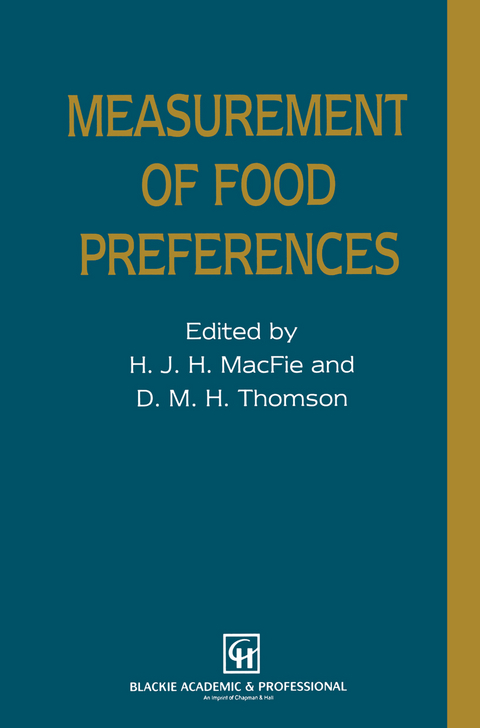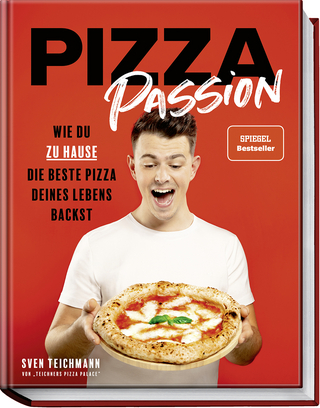
Measurement of Food Preferences
Springer-Verlag New York Inc.
978-1-4613-5908-1 (ISBN)
1 A measurement scheme for developing institutional products.- 1.1 Introduction.- 1.2 Phase I. Consumer marketing.- 1.3 Phase II. Individual item sensory testing.- 1.4 Phase III. Consumer meal testing — laboratory.- 1.5 Phase IV. Consumer meal testing — field.- 1.6 Phase V. Prototype testing.- 1.7 Phase VI. Extended ration use validation.- 1.8 Phase VII. Quality control testing.- 1.9 How to use the seven-phase testing sequences.- References.- 2 Appropriateness as a measure of the cognitive-contextual aspects of food acceptance.- 2.1 Introduction.- 2.2 Description of procedures for appropriateness, item by use technique.- 2.3 Conclusions.- References.- 3 The repertory grid approach.- 3.1 Introduction.- 3.2 Methodology.- 3.3 Application.- 3.4 Conclusions.- References.- 4 Focus group interviewing.- 4.1 Introduction.- 4.2 The process of conducting focus groups.- 4.3 Summary.- References.- 5 Product optimization: approaches and applications.- 5.1 Background and applications.- 5.2 Steps in a designed experiment and product optimization study.- 5.3 A case history — salsa.- 5.4 An overview.- References.- 6 Preference mapping in practice.- 6.1 Introduction.- 6.2 External preference analysis — Prefmap.- 6.3 Internal analysis — MDPREF.- 6.4 Advantages and limitations of preference mapping.- 6.5 Aspects of conduct.- References.- 7 An individualised psychological approach to measuring influences on consumer preferences.- 7.1 Introduction.- 7.2 Measuring individual consumer preferences.- 7.3 Psychophysical acceptance parameters.- 7.4 Aggregation of individuals’ acceptance parameters.- 7.5 Measuring determinants of acceptance in the `real world’.- 7.6 Conclusions.- References.- 8 Modelling food choice.- 8.1 Introduction.- 8.2 Factors influencing food choice.- 8.3 Beliefsand attitudes.- 8.4 Application of the theory of reasoned action to food choice.- 8.5 Extensions of the theory of reasoned action.- 8.6 Conclusions.- References.- 9 Nutritional influences on mood and cognitive performance:their measurement and relevance to food acceptance.- 9.1 Introduction.- 9.2 Relevance to food acceptance of dietary effects on behaviour.- 9.3 Conceptual issues.- 9.4 Methodological issues.- 9.5 Caffeine: a case study.- 9.6 Summary.- References.- 10 Consumer expectations and their role in food acceptance.- 10.1 Introduction.- 10.2 The plausible role of expectations in food behavior.- 10.3 Consumer expectations and food acceptance.- 10.4 Experimental studies.- 10.5 Summary/conclusions.- References.
| Zusatzinfo | XII, 301 p. |
|---|---|
| Verlagsort | New York, NY |
| Sprache | englisch |
| Maße | 155 x 235 mm |
| Themenwelt | Sachbuch/Ratgeber ► Essen / Trinken ► Grundkochbücher |
| Recht / Steuern ► EU / Internationales Recht | |
| Technik ► Lebensmitteltechnologie | |
| Wirtschaft ► Betriebswirtschaft / Management | |
| ISBN-10 | 1-4613-5908-2 / 1461359082 |
| ISBN-13 | 978-1-4613-5908-1 / 9781461359081 |
| Zustand | Neuware |
| Haben Sie eine Frage zum Produkt? |
aus dem Bereich


